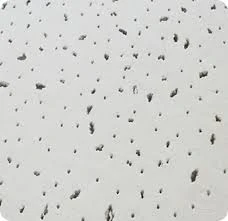9 月 . 03, 2024 20:19 Back to list
pvc ceiling vs gypsum
PVC Ceiling vs. Gypsum Ceiling An In-Depth Comparison
When it comes to selecting the right ceiling material for your home or commercial space, the choice often narrows down to PVC (Polyvinyl Chloride) ceilings and gypsum ceilings. Both materials have unique properties, advantages, and disadvantages that make them suitable for different applications. Understanding these factors can help you make an informed decision.
PVC Ceilings
PVC ceilings have gained popularity in recent years due to their numerous benefits. One of the key advantages of PVC ceilings is their durability. They are resistant to moisture, mold, and mildew, making them an excellent choice for areas with high humidity, such as bathrooms and kitchens. Furthermore, PVC ceilings are lightweight, which simplifies installation and reduces the load on the building structure.
Another notable feature of PVC ceilings is their low maintenance requirement. They can be easily cleaned with a damp cloth, and their surface does not require painting or sealing. This ease of maintenance appeals to many homeowners and property managers. Additionally, PVC ceilings are available in a wide range of colors, patterns, and finishes, allowing for versatile design options to complement any interior décor.
However, PVC ceilings do have some drawbacks. They can be less environmentally friendly, as PVC is a type of plastic that may release harmful chemicals during production or disposal. Moreover, while they are durable, prolonged exposure to direct sunlight can cause discoloration over time.
pvc ceiling vs gypsum

Gypsum Ceilings
Gypsum ceilings, often referred to as drywall or plaster ceilings, have been a traditional choice for many residential and commercial spaces. A major benefit of gypsum ceilings is their excellent fire resistance. Gypsum contains water molecules that can absorb heat and help prevent the spread of fire, making it a safer choice in terms of building safety.
In addition to fire resistance, gypsum ceilings offer superior sound insulation, which can be critical in environments where noise reduction is important, such as offices or multi-family residences. Gypsum ceilings provide a smooth and seamless finish that can easily be painted, allowing for greater customization in terms of color and design.
On the downside, gypsum ceilings are heavier than PVC and may require more effort and cost during installation. They are also susceptible to moisture damage, which can lead to sagging or mold growth in damp areas if not adequately treated.
Conclusion
In conclusion, both PVC and gypsum ceilings have their unique advantages and disadvantages. PVC ceilings stand out for their durability and low maintenance, making them ideal for humid environments. Conversely, gypsum ceilings excel in fire resistance and sound insulation, making them preferable for safety-conscious settings. Ultimately, the best choice between the two will depend on factors such as the specific location, budget, and desired aesthetic appeal. By carefully considering these elements, you can make a choice that aligns with your needs and preferences.
-
Revolutionizing Interior Design with Ceilings t grid Suspended SystemNewsOct.29,2024
-
Revolutionizing Ceiling Design with ceiling access panel with Gypsum Tile WaterproofNewsOct.29,2024
-
Revolutionizing Interior Design with PVC Gypsum Ceiling: A Comprehensive GuideNewsOct.29,2024
-
Elevating Interior Design with High quality Mineral Fiber Ceiling TilesNewsOct.29,2024
-
Revolutionizing Interior Design with PVC Gypsum Ceiling: A Comprehensive GuideNewsOct.29,2024
-
Elevating Interior Design with High-Quality Mineral Fiber Ceiling Tiles: A Comprehensive GuideNewsOct.29,2024







